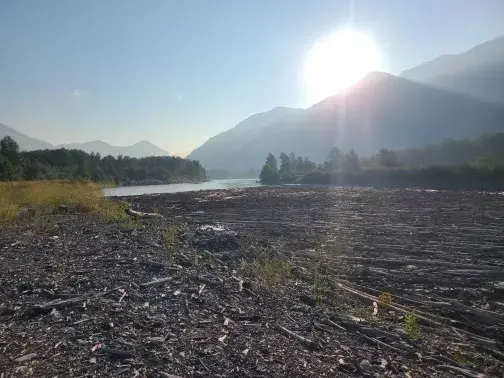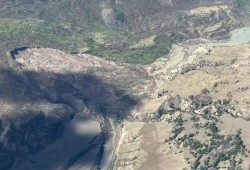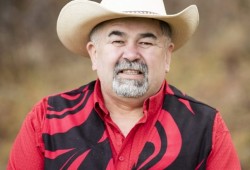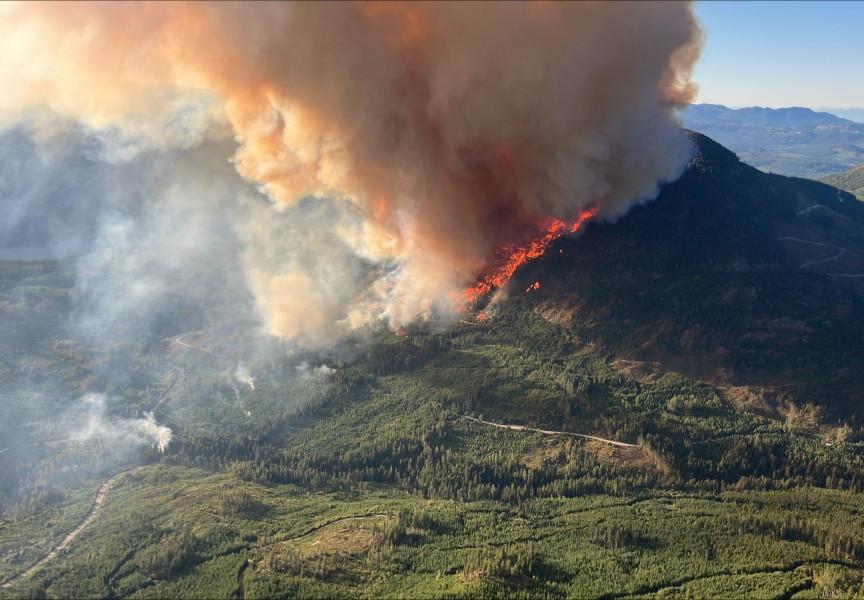The floodwaters have receded along the Fraser and Chilcotin Rivers, and 30,000 cubic meters of wooden material have been captured in the Fraser River Debris Trap near Agassiz. Yet, the effects of the July 30th Chilcotin landslide on this year's salmon migration have yet to be realized.
Every spring hundreds of thousands of salmon begin the ultimate journey to complete their life’s work. Starting at the mouth of the Fraser River, in Vancouver, they end at Chilko Lake to spawn and die; a span of 500 kilometres. Around August, tribal communities who call themselves “the River People” gather along the banks of the Chilcotin River to catch salmon using their traditional method of dip net fishing - immersing a large net into the water to catch the migrating salmon, one by one.
Between the five different types of salmon that migrate up these rivers to spawn, roughly 120,000 fish were expected this year, as stated by an August 12 situation report from the Tsilhqot’in National Government. According to an August 7th press release from the Pacific Salmon Foundation, the salmon returning to the Fraser River this year were already facing a challenge due to rising water temperatures. Now they will suffer increased difficulties with the buildup of sediment and debris and lack of a clear pathway.
“This was the last healthy run left on the Fraser River,” said Chief Joe Alphonse, Tsilhqot’in Government Tribal chair, recently in a press conference. “Everyone in the province can benefit from that. Whether or not you’re a commercial fishery in Alaska to salmon lodges all through the coast, they depend and live off of our resources that we produce here in the interior.”
The Tsilhqot'in Nation depends on the salmon as a food and economic source.
“We don’t fight for that fish for the benefit of the mighty dollar. We do it to have food on our table,” Alphonse stated.
Tribal Chair of the Tsilhqot'in National Government and Nits’ilin Chief Francis Laceese agreed, emphasizing, “the salmon are part of our identity. They are our biggest food source.”
The Tsilhqot'in National Government quickly initiated a task force, composed of members from Fisheries and Oceans Canada (DFO), the Province of B.C., the Upper Fraser Fisheries Conservation Alliance (UFFCA), and several external experts, to determine the best course of action for the salmon. As an immediate action, Tsilhqot'in National Council of Chiefs have asked their tribal members not to harvest salmon this summer, and, according to Alphonse and Laceese, are asking the B.C. government to immediately limit openings of commercial and recreation fisheries.
Connie Chapman, the provincial government’s director of Water Management, said they are monitoring salmon stocks - particularly the sockeye as they come into the system - and assessing the Chilcotin and Fraser River banks to ensure that additional slumping and sloughing does not create a new challenge for these salmon.
The task force has set up SONAR monitoring just above the slide site, in Hanceville, and in the Little Chilcotin, Taseko and Chilko systems to track when and how fish are passing through the location to help inform decisions. They are also monitoring water levels, flow, and clarity up and down stream of the slide.
“We will continue to monitor to determine whether they are able to make their way up the river to spawn,” said Nathan Cullen, B.C.’s minister of Water, Land, and Resources Stewardship.
The hope is that the water carves a channel that the salmon can pass through. Previously, in the Big Bar Landslide of 2021, the salmon were not able to migrate naturally through the Fraser River north of Lillooet and were manually transported over the slide area. That will not work in this instance, because the stress of the transport will leave them in no condition to spawn, said Alphonse.
Of the five different species of salmon, Chilko chinook and Elkin Creek chinook may not be as severely impacted due to the later timing of their migration. Chilcotin chinook reached their spawning grounds prior to the landslide, which is great news in an unfortunately bleak salmon forecast. Several Taseko sockeye were detected by the SONAR system earlier in July, but their highest concentration is due to come through the system presently. This salmon is critically endangered, and at high risk of extinction as a result of the Big Bar slide. Chilko sockeye, with numbers only reaching 100,000, are expected to reach their peak return on August 25-26, and are of high concern due to their low numbers.
Cullen explains that they are working with First Nations on a plan B if Mother Nature doesn’t resolve itself.
“Salmon and Mother Nature are resilient and may resolve itself as the water gets cleaner and debris diminishes.”
If Mother Nature has other plans, DFO is currently working on potential fish passage mitigation that includes emergency enhancement, trap and transport.
The rivers will recover over time, but the current impact of debris and erosion on the salmon’s natural habitat is severe, and the imprint this destruction leaves on the livelihood and food security of First Nations in the area is being felt.
As it stands, the only thing that is certain, is uncertainty.









